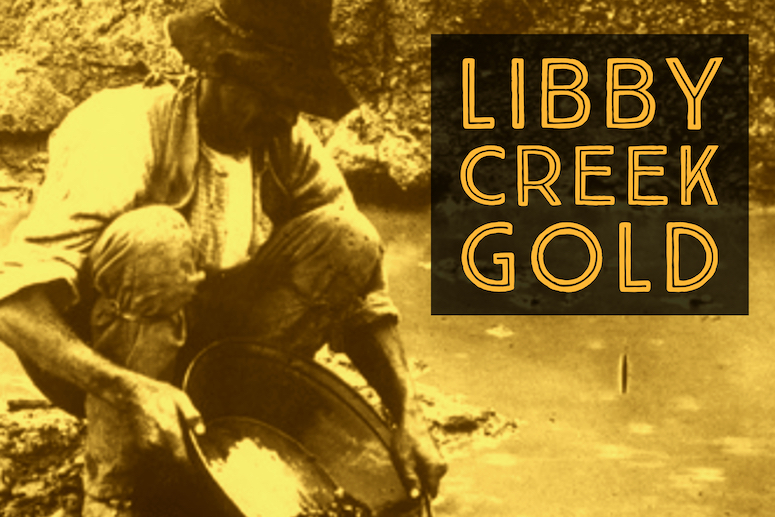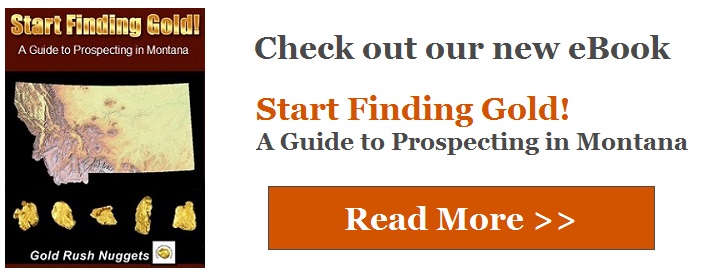
Libby Creek still offers the modern-day prospector a good chance of finding gold. This certainly wasn’t Montana’s largest gold strike, but every year prospectors still come to this areas to search for gold hiding amongst the gravel.
The creek drains the high country of Lincoln County, with the nearest towns being Libby and Troy. The largest town of any size is Kalispell, some 80 miles to the east.
There is now a recreational panning area that has been set aside by the Forest Service for the sole purpose of providing prospecting opportunities. The designated area is 23 miles south of Libby. Nobody can put a mining claim on this ground, and the area is open to the public for the purpose of finding gold. There are a few rules to keep in mind which we will touch on a bit later in this article. First, let’s take a look at this golden history of Libby Creek.
Libby Creek Mining History
Gold was first discovered in Libby Creek back in 1867, back when Montana was remote and unwelcoming. The climate, particularly during the winter months, can be harsh and unforgiving. This undoubtedly had an effect on the development of this remote area, but a few hundred men mined the creek for the first decade following the discovery.
Mining slowed and the population dwindled as time went by. A renewed interest came around the turn of the century when hydraulic mines were established. The hydraulic operations employed 15 men, a far cry from some of the bigger mines in California, but they were profitable nonetheless. They washed these bench gravels for decades.
The first miners would pan and sluice the gravels right in Libby Creek. The gravels were rich, but it was also noted that exposed bench deposits sat high above the existing creek. These exposed gravels also contained gold and in some cases they were just as rich as those found in the creek itself.
A dryland dredge operated for a few years in the late 1930s. This operation was not profitable and ceased after a few years.
Aside from Libby Creek, there is also gold to be found in the Bear Creek, Big Cherry Creek, Granite Creek, Howard Creek, and Poorman Creek. Many other small tributaries also contain gold, but most of the better areas are now claimed.
Gold Panning Area on Libby Creek
The open prospecting area on Libby Creek is easy to find. From Libby, go south on Highway 2 for about 13 miles and look for the turnoff to Libby Creek Road. Take the gravel road that follows right up the creek for about 10 more miles. There is good signage and decent roads to the panning area.
Rules and Restrictions
There are still some pretty decent gold deposits that you can recover within the prospecting area at Libby Creek. The main downside for more serious prospectors are the limitations on equipment that you can use. No motorized or mechanized equipment of any sort can be used. This is a serious limitation, especially because the Forest Service has deemed that even basic items like sluice boxes are considered “mechanized.” Even wheelbarrows are banned.
Unfortunately metal detecting is not allowed within the designated panning area either. You are basically limited to using a gold pan and basic hand tools for digging.
These restrictions certainly limit the amount of gravel that you can process. Nonetheless, you can find some decent gold if you crevice down in the bedrock. Most of what you find will be very fine.
A few more rules to keep in mind:
Club Claims on Libby Creek
Most serious miners want to use bigger equipment like sluice boxes and trommels. You can still use this equipment on Libby Creek, but not within the recreational panning area. If you want to use bigger gear then your best bet is to join a club that has claims on Libby Creek.
The Northwest Montana Gold Prospectors club has some claims nearby, and your entire household can join for just $75 per year. If you plan to do much prospecting in the area then it might be worthwhile to join the club. It’s likely that the extra gold you will recover by using bigger equipment will easily offset the cost.
Metal detecting is also an option if you are on a club claim. Historically there have been some decent nuggets found on Libby Creek. No monster, but pieces ranging from a few grams up to a half-ounce have been recorded. (It wouldn’t surprise me if some bigger ones were found during the original Gold Rush that were never recorded.)
There is good exposed bedrock that you can work, and nuggets can also be found up on the ledges above the creek. A good metal detector with a small search coil is best for working the jagged bedrock. Small nuggets will be wedged down in the cracks.
Read: Detecting Gold in Hammered Areas – Seeking out the “Crumbs”
Primitive Camping & Limited Facilities
One thing I love about Montana is that it is less developed than a lot of places that get more traffic and recreation. Just keep this in mind when you visit. Services are limited.
There is a restroom on site at the panning area. There is no developed parking areas or camp sites within the panning area.
In the general area, there is lots of public land and plenty of open areas to camp. If you are tent camping you will have no troubles finding an area to set up camp.
The nearest developed camp site is just 1 mile away at the Howard Lake Campground that is suitable for larger RVs. There are 10 sites along the northern edge of the lake. There’s even a little gold in Howard Creek too.
Next: Montana’s Huge Bucket Gold Dredges (9 Historic Images)

